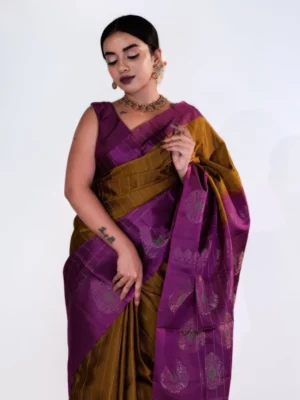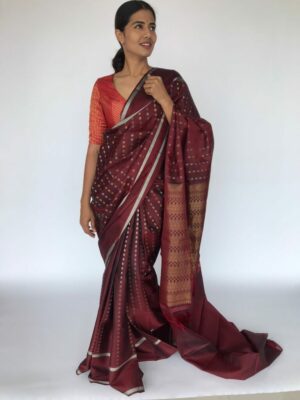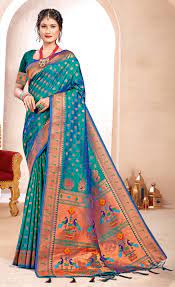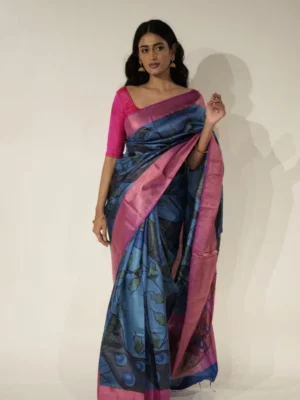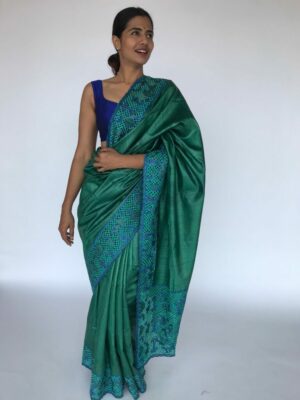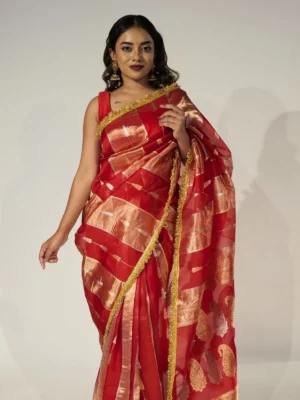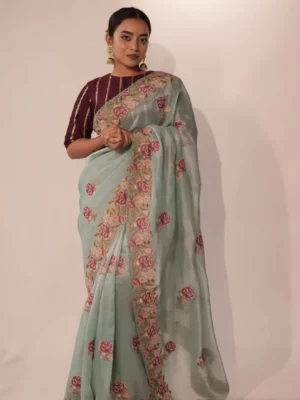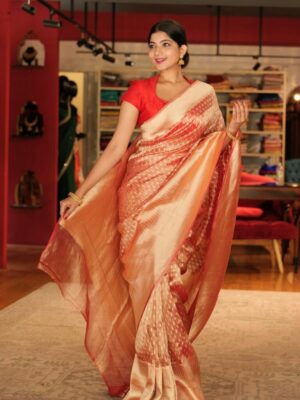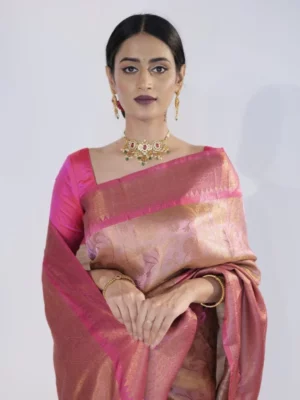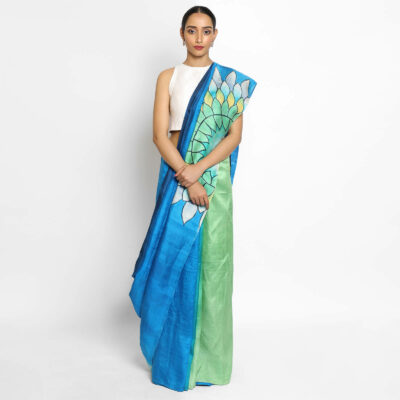Luxurious Weaves: The Allure of Silk Sarees
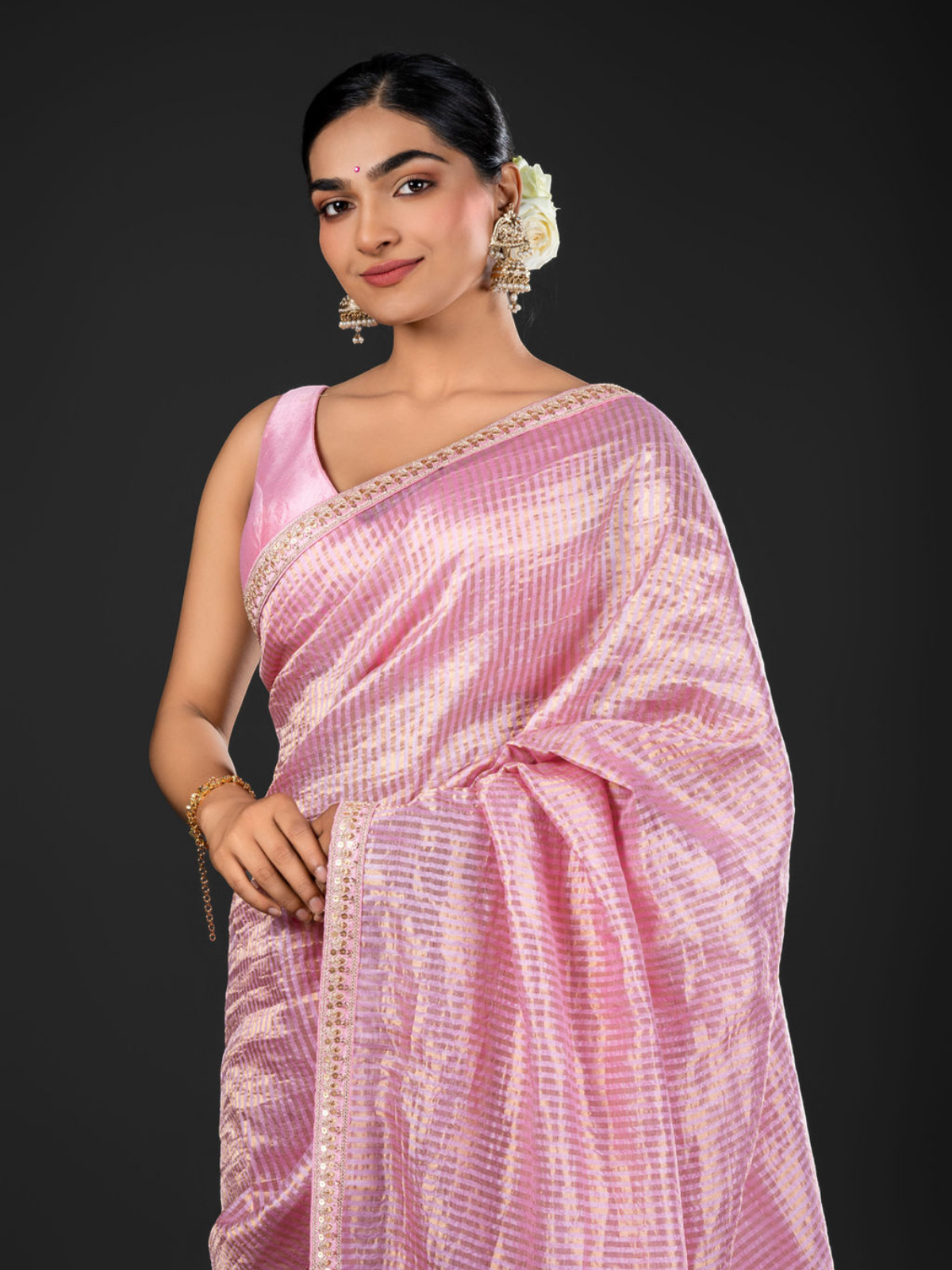
Silk sarees have a long history of representing Indian culture’s heritage, luxury, and grace values. In addition to gracefully accessorizing the wearer, these enduring works of art also convey the rich history of the places they were crafted. There is a tale behind every weave, from the modest allure of art silk sarees to the magnificent Kanchipuram sarees. We may delve into the charm of silk sarees by looking at some of the most popular styles.
Art Silk Sarees: Affordable Elegance
Affordable art silk sarees have classic silk’s beauty without the hefty price tag. These sarees are fabricated using synthetic fibers that imitate genuine silk’s look, feel, and shine. People who want the opulent appearance of silk but cannot afford its exorbitant price tag opt for these fabrics.
Varieties of Art Silk Sarees
From plain solid colors to elaborate embroidery and printing, art silk sarees are available in a wide variety of motifs and patterns. You may wear them to casual and formal events because of their adaptability.
Care and Maintenance
An advantage of art silk sarees over pure silk is how much less maintenance they need. These are great for casual wear, as you can wash them by hand or in the machine on a delicate cycle.
Kanchipuram Sarees: The Pride of South India
Kanjeevaram sarees, or Kanchipuram sarees, are traditional Indian clothing that originates in the Tamil Nadu town of Kanchipuram. Beautiful sarees made of silk with intricate designs are an icon of South Indian culture.
Traditional Weaving Techniques
The ancient weaving processes used to create Kanchipuram sarees are what gives them their charm. Handwoven from pure mulberry silk with zari threads of gold or silver, each saree is an exquisite and long-lasting piece of clothing.
Popular Designs and Motifs
Designs on Kanchipuram sarees often include elements derived from nature, like peacocks, flowers, and leaves. Temple borders and checks are additional distinguishing features of these sarees.
Paithani Sarees: Royalty in Silk
The royal look and outstanding workmanship of Maharashtra-made Paithani sarees have made them famous worldwide. The classic beauty of these sarees makes them popular as heritage.
Unique Features
The kaleidoscopic patterns produced by using many colored threads in Paithani sarees are instantly recognizable by their oblique square motifs. Delicate patterns, such as flowers and peacocks, adorn the saree’s pallu, or end portion.
Traditional vs. Contemporary Paithani
Modern iterations of the classic Paithani saree may include synthetic dyes and patterns, but the originals retain the use of pure silk. Nevertheless, both versions successfully preserve the core of Paithani’s rich tradition.
Tussar Silk Sarees: The Texture of Nature
The natural texture and deep, earthy colors of Tussar silk, sometimes called Kosa silk, make it very desirable. The silk used to weave these sarees is really generated by a variety of silkworm species, not only the mulberry silkworm.
Natural Beauty
Sarees made with Tussar silk have a distinctive texture that distinguishes them from other types of silk. They often have subdued natural tones that draw attention to the beauty of the organic sources of the silk.
Versatility in Design
You may style a Tussar silk saree in a variety of ways, and they come in a wide variety of designs, from classic themes to modern ones. Because of how comfortable and lightweight they are, they are a go-to for both formal and casual events.
The Enduring Legacy of Silk Sarees
Silk sarees have stood the test of time as a sign of elegance, culture, and history. These sarees will always be in vogue because of how well they adapt to new styles without sacrificing their classic good looks.
Cultural Significance
Indian weddings, festivals, and religious rituals are just a few of the many occasions when women wear the cherished silk saree. People often associate them with prosperity and innocence.
Sustainability and Handloom Weaving
The sustainable fashion movement and traditional craftsmen who make silk sarees on handlooms are both encouraged by this trend. Many weavers rely on the handloom company for their livelihood, which is vital to preserving silk weaving’s heritage.
Choosing the Perfect Silk Saree for Every Occasion
Think about the event, the fabric, and your own style while choosing a silk saree. Every occasion calls for the perfect silk saree, whether it’s a wedding, a party, or a more formal affair.
Matching Saree Styles with Occasions
The intricate patterns of Kanchipuram and Paithani sarees make them perfect for special occasions like weddings and major festivals. Art silk, tissue, and Tussar silk sarees have a subtle elegance that is sure to turn heads.
Accessorizing Silk Sarees
Accessorizing a silk saree with the correct pieces may bring out its charm. The appearance may be rounded up with traditional jewelry, such as temple jewelry used with Kanchipuram sarees or delicate gold pieces worn with Paithani sarees.
The Art of Draping: Mastering Silk Sarees
Silk saree draping is an intricate art form that requires time and effort. The way a saree is draped is an important factor in its comfort and overall look.
Traditional Draping Styles
The traditional draping style of India varies from area to region. The Bengali drape and the Andhra Pradesh Nivi drape are two of the most well-known and classic types of drapes.
Tips for a Perfect Drape
If you want your saree to drape beautifully, iron it and line up the pleats. You may keep the saree in place all day long by using safety pins to fasten the pallu and pleats.
To Sum Up
Silk sarees are cherished treasures in Indian households for their enduring beauty, rich cultural heritage, and historical significance. All kinds of silk have their own stories and charms; affordable art silk is royal; Paithani is magnificent; and Tussar silk is beautiful and natural. Sustainable handloom weaving, elaborate patterns, and adaptability make these sarees beloved. The beauty of silk sarees may be amplified by selecting the perfect one and being an expert draper. Silk sarees will forever be a symbol of elegance and grace, an outfit that will never go out of style.
